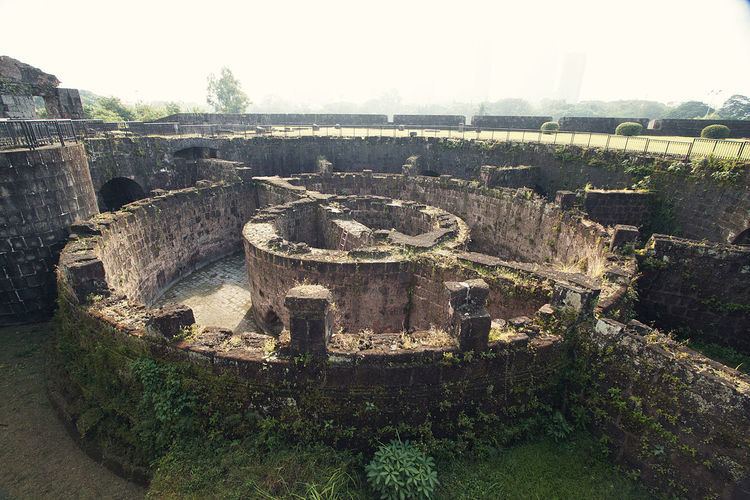Type Fortification Opened 1587 Structural system Masonry | Architectural style Bastioned fort Phone +63 6325272961 | |
 | ||
Former names Fort Nuestra Señora de Guia Owner Government of the Philippines Similar Casa Manila, San Agustin Church, Fort Santiago, Plaza Moriones, Rizal Shrine | ||
The Baluarte de San Diego is a bastion in Intramuros, part of the Spanish colonial fortification in the walled city of Manila in the Philippines.
Contents
- Video tour of baluarte de san diego intramuros
- History
- Archaeological excavation
- Excavated structures
- Present condition
- References
Video tour of baluarte de san diego intramuros
History
The existence of the fort started from Governor General Gómez Pérez Dasmariñas who integrated an older fort with cortina or curtain walls, built from 1591-1594. The bastion is a protruding structure with facing flanks built along the cortina. The purpose of its projection was to ensure a clearer view of the cortina for the artillery - in order for them to prepare against invaders. The bastion has two parts; face (which projected outward) and flanks (connecting the face and the cortina, or the curtain wall). Several developments were added in the course of time such as addition of semi-circular structures at the base called orillons or little ears making the bastion resemble an ace-of-spades shape.
Baluarte de San Diego was an ace-of-spades bastion built on the southwestern corner of Intramuros. It underwent several alterations. In 1609, a writing from Antonio de Morga states that the structure was only a tower within a much larger construction of the Fort Nuestra Señora de Guia. Jesuit priest Antonio Sedeño was the commissioned parish priest responsible for the construction of the Fort Nuestra Señora de Guia. Some of the amenities and facilities included within the fort were courtyard, cistern tank (water supply tank), lodging quarters, and workshops. However, the construction of the fort was always interrupted due to arising circumstances, thus, was not finished.
Archaeological excavation
The archaeological excavation of Bastion de San Diego was conducted by Intramuros Administration and the National Museum from 1979 up to December 1982. Dog-leash method was used due to the sandy soil condition of the site. This method involved measuring the location of artifacts and their distances from a single control point, and orienting their location toward a datum point.
Below were the following facts established:
- The unexcavated portion below the exposed level of the outer circular structure and the casements on its street level may have been part of the original Vera-Sedeño tower, with possible improvements introduced during Manrique de Lara's time.
- The construction of the second and first circular structures is not contemporaneous with the older structure, being differentiated from the third circle by its finish and mode of construction.
- The terra-cotta finish of the masonry of the second and first circles appears to have been applied for waterproofing.
- Brick tiles were introduced in the flooring of the innermost circle so that it may act as filter from underground impurities.
- No trace was left of the circular wall that had supposedly surrounded the patio of Vera's time. The present inner circular structures have floor elevations that fall at 3.65 metres (12.0 ft) below the present street level. The latter coincides with the flooring of the third outer circle.
Excavated structures
Bastion de San Diego is composed of three concentric structures; the first, second, and third circle. The first circle has an inner diameter of 8 metres (26 ft) and a wall thickness of 1.41 metres (4.6 ft). It lies 3.65 metres (12.0 ft) below the present street level of Muralla Street on the southern section. It has a total height of 5.75 metres (18.9 ft). Also, its inner and outer sides were plastered in pink terra cotta. The second circle has a diameter of 21 metres (69 ft) with a wall thickness of 0.90 metres (3.0 ft). Its total height is 6.15 metres (20.2 ft). The interior surface of the second circle was in terra-cotta finish. The flooring of both circles were made of brick tiles. The third circle has a height of 8.55 metres (28.1 ft) with a diameter of 32 metres (105 ft) and a wall thickness of 3 metres (9.8 ft). It is composed of 11 chambers. Although it is constructed with adobe walls, it has no direct relation to the first 2 circles. It was constructed earlier than the remaining circles.
Present condition
Gardens and pergolas were added to make the structure more appealing to the visitors and more suitable for special events. The area is managed by the Intramuros Administration, an attached agency of the Department of Tourism.
